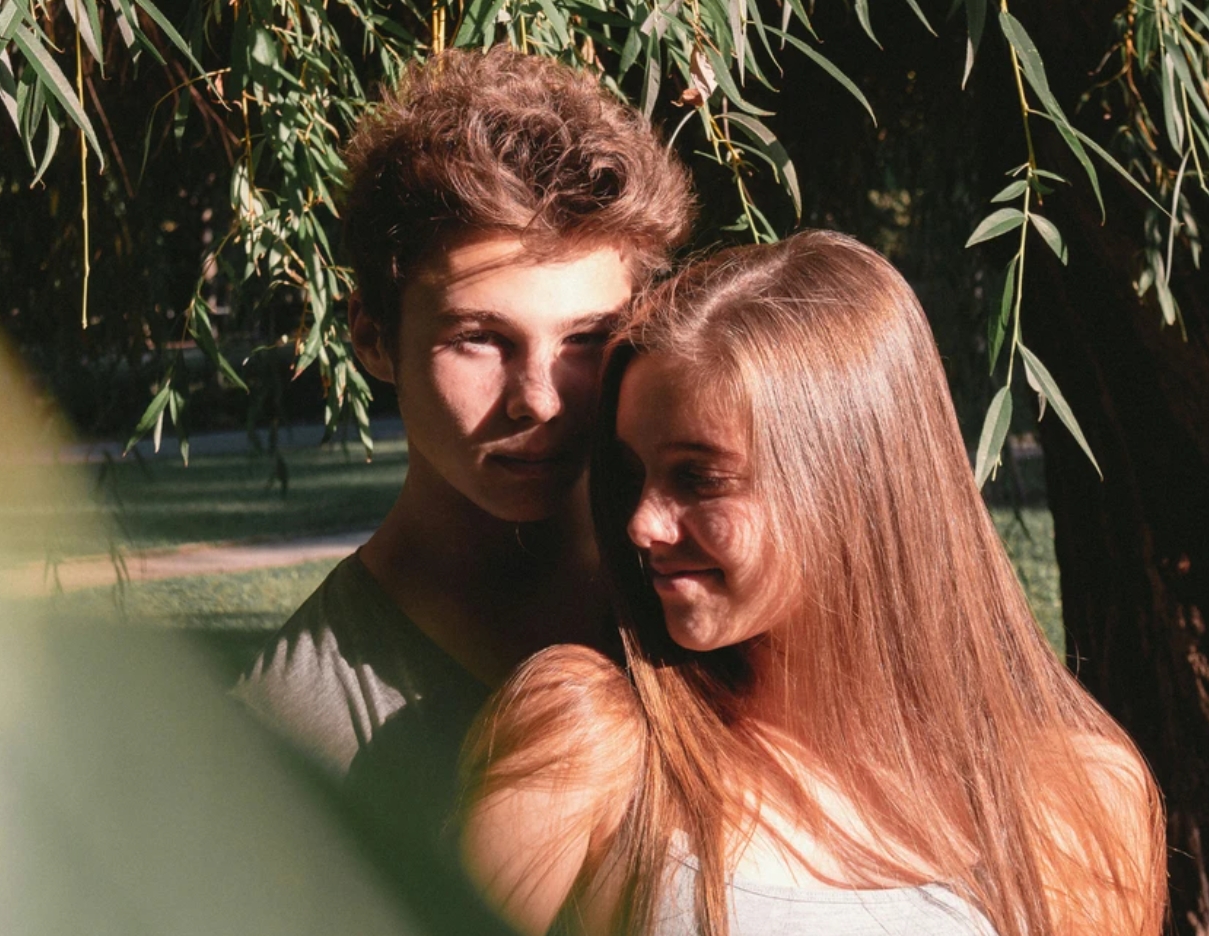Anxious preoccupied attachment style affects approximately 20% of people, creating a complex relationship dynamic characterized by fear of abandonment and rejection . If you constantly seek reassurance from partners or find yourself ruminating over small interactions that didn’t seem to go well, you might be experiencing this attachment pattern .
An anxious attachment style is actually an insecure attachment style characterized by a strong desire for meaningful relationships coupled with overwhelming insecurity . People with this attachment pattern often have high regard for their friends and loved ones but maintain a very poor view of themselves . Furthermore, they frequently think about their relationships and become overly dependent on their partners, constantly seeking reassurance .
We understand the emotional rollercoaster this creates. In this guide, we’ll explore how anxious attachment develops from unpredictable or insensitive parenting in childhood , how it manifests in adult relationships, and specifically, how you can begin healing these patterns. Whether your anxious attachment originated in childhood or developed through difficult early dating experiences , this article offers practical strategies to help you break free and build healthier relationship dynamics.
What is Anxious Preoccupied Attachment?

Image Source: Panahi Counseling
Anxious preoccupied attachment emerges as one of the three insecure attachment styles, affecting approximately 19% of adults according to research [1]. Also referred to as anxious-ambivalent attachment in childhood contexts, this attachment pattern develops when a caregiver responds to a child’s needs inconsistently or unpredictably.
At its core, anxious preoccupied attachment creates a relationship blueprint marked by intense desire for closeness paired with persistent worry about the availability and responsiveness of others. Individuals with this attachment style typically maintain positive views of others while harboring negative perceptions about themselves—often considering themselves unworthy of love or affection [2].
How it differs from other insecure attachment styles
Insecure attachment manifests in three distinct patterns, each with unique characteristics that shape relationship behaviors:
Anxious attachment involves constantly seeking reassurance and validation while struggling with boundaries. People with this attachment style frequently appear clingy or needy to non-anxious partners [3]. They crave closeness and intimacy, responding to relationship stress by actively pursuing their partner’s attention and affection [4].
Avoidant attachment, conversely, rarely leads people to seek help from others during times of need. Those with avoidant patterns maintain a strong distrust in others’ ability to meet their needs alongside a powerful desire for independence [3]. During conflict, they typically withdraw rather than pursue connection.
Disorganized attachment presents as conflicting desires—wanting relationships yet fearing them simultaneously. People with this pattern often feel fundamentally unlovable and display both anxious and avoidant behaviors in unpredictable combinations [3].
The primary distinction lies in how each style responds to relationship stress—anxious attachers hyperactivate (becoming more demanding), avoidants deactivate (becoming more distant), while disorganized attachers switch chaotically between the two strategies.
Common emotional patterns and fears
People with anxious preoccupied attachment experience a characteristic constellation of emotional patterns and fears that significantly impact their relationships:
- Fear of abandonment and rejection: The core fear driving anxious attachment is abandonment. This stems from inconsistent caregiving that created an internal working model where love feels unpredictable [3][1].
- Emotional hunger: Anxiously attached individuals often express what resembles an “emotional hunger” as they constantly search for validation that their partner loves them and won’t leave [5].
- Hypervigilance: They develop an exceptional sensitivity to subtle emotional cues—what some call a “military-grade emotional radar”—detecting small changes in facial expressions, body language, or tone that might signal rejection [6].
- Low self-esteem: Persistent feelings of unworthiness and self-doubt make them prone to believing they don’t deserve love [7].
- Emotional intensity: Feelings are experienced with unusual depth and reactivity, often leading to emotional overwhelm [6].
This hypervigilance creates both advantages and drawbacks. While anxiously attached individuals can be highly attuned to partners’ needs [5], their emotional radar is often oversensitive, mistaking minor issues for major threats—like “mistaking a flock of seagulls for a missile attack” [6].
Research indicates that despite their heightened awareness of emotions, people with anxious attachment don’t necessarily score higher on measures of emotional intelligence compared to other attachment styles [6]. This happens because their intense emotional responses often cloud clear understanding of relationship dynamics.
Understanding these patterns represents the first step toward healing anxious attachment. Recognizing that these responses stem from early adaptation rather than personal failings opens the door to developing more secure relationship patterns.
How Anxious Attachment Develops
The roots of anxious preoccupied attachment style typically form in early childhood, primarily through specific patterns of interaction with primary caregivers. Understanding these developmental origins helps explain why approximately 19% of adults develop this attachment pattern [8].
Inconsistent caregiving in childhood
Inconsistent caregiving stands as the fundamental catalyst for anxious attachment development. Unlike other attachment styles, anxious attachment specifically emerges when caregivers respond to a child’s needs in unpredictable ways—sometimes attentive and nurturing, other times emotionally distant or unavailable [9]. This inconsistency creates a profound dilemma for children, who cannot anticipate when their emotional needs will be met.
From the child’s perspective, this unpredictability means they can’t reliably predict if their parent will be emotionally or physically available when needed [8]. The caregiving pattern might include:
- Being nurturing and attuned in some moments but insensitive or cold in others
- Responding slowly or inconsistently to signs of distress
- Showing unpredictable emotional availability
Children experiencing this inconsistency develop a powerful anxiety around connection. They learn that their needs might sometimes be met, yet they can never fully trust this will happen [8]. As a result, the child becomes preoccupied with seeking reassurance, often appearing “clingy” or “whiny” as they attempt to secure care [9].
Emotional neglect or over-dependence from caregivers
Emotional neglect represents another significant pathway to anxious attachment formation. Studies indicate childhood emotional neglect is commonly linked to developing an anxious attachment style [10]. This neglect manifests through repeated patterns where a child’s emotions are ignored, invalidated, dismissed, or minimized [11].
Moreover, anxious attachment can develop through what experts call “emotional hunger” from caregivers [2]. In these situations, parents seek emotional closeness with children primarily to satisfy their own emotional needs rather than the child’s. Such parents often appear intrusive or overprotective, essentially using the child to fill their own emotional voids or to present themselves as perfect parents [2].
This dynamic creates confusion for children, who sense they’re valued not for themselves but for how well they meet their parent’s emotional needs. Subsequently, they develop poor self-esteem coupled with an excessive focus on others’ needs—a hallmark of anxious attachment.
Impact of early trauma or loss
Early traumatic experiences, particularly separation from caregivers or loss of a parent, can profoundly influence attachment style development. Research indicates the death of a primary caregiver triggers activation of the attachment system, creating predictable responses including protest, anger, yearning, intense sorrow, and withdrawal [12].
Studies further reveal that early loss can lead to what Bowlby termed “chronic mourning” characterized by overwhelming anxiety, prolonged difficulties creating new relationships, and difficulty accepting the loss [12]. In adulthood, this manifests as fear that partners won’t be available when needed, alongside persistent fears of abandonment [12].
Additionally, other traumatic experiences including physical or emotional abuse can contribute to anxious attachment development. Children experiencing trauma develop a heightened sense of vulnerability and uncertainty about whether protection will be available when needed.
Importantly, research shows these attachment patterns cannot be explained by genetic factors alone, suggesting environmental transmission through parent-child interactions [13]. Indeed, caregivers who themselves have anxious attachment styles often unintentionally perpetuate these patterns with their own children, creating an intergenerational cycle [2] unless healing intervention occurs.
Signs of Anxious Attachment in Relationships

Image Source: Verywell Health
Identifying anxious preoccupied attachment style in relationships requires recognizing specific behavioral patterns that emerge consistently. Research suggests that approximately one in five adults exhibits this attachment style [14], which manifests through distinctive relationship behaviors that can strain connections with partners.
Fear of abandonment and rejection
Individuals with anxious attachment experience a persistent fear that their partners will leave them once they discover their “true selves” [1]. This fear stems from a deep-seated belief that they’re fundamentally unworthy of lasting love. Whenever conflicts arise, even minor disagreements can trigger intense fears of relationship dissolution [7]. Consequently, anxiously attached individuals often catastrophize ordinary relationship fluctuations, interpreting a partner’s bad mood or need for space as evidence of impending abandonment [4].
Clinginess and need for reassurance
Anxious attachers frequently seek repeated validation that they are loved and won’t be left [14]. This manifests as behaviors like excessive texting when partners don’t respond quickly, constant solicitation of compliments, and becoming upset when partners seem distant [14]. Primarily, this need for reassurance arises from prioritizing the partner’s needs above their own [1], alongside an overwhelming need to feel emotionally connected at all times [15].
Difficulty setting boundaries
Setting and maintaining healthy boundaries proves especially challenging for those with anxious attachment. Whenever anxiously attached individuals feel their boundaries have been violated, they tend to experience heightened emotional responses like anger and confusion [16]. Nonetheless, their fear of abandonment typically leads them to quickly forgive boundary violations [16]. Many anxiously attached people engage in “electronic intrusion” – checking partners’ phones without permission, monitoring social media activity, or tracking whereabouts [16]. These behaviors stem from deep-rooted fears that setting boundaries might upset partners or lead to rejection [17].
Hypervigilance to partner’s behavior
Hypervigilance represents one of the most distinctive traits of anxious attachment in relationships. This manifests as an exceptional sensitivity to subtle emotional cues from partners [6], including:
- Constantly monitoring partner’s moods, tone, and body language
- Overanalyzing texts, conversations, and periods of silence
- Scanning facial expressions for signs of disapproval
- Personalizing tone changes and assuming personal fault
- Expecting worst-case scenarios in relationships [6]
This hypervigilance typically develops from past experiences with unpredictable caregivers or relationship trauma [6]. Though initially a protective mechanism, it often creates unnecessary relationship stress as anxiously attached individuals misinterpret minor issues as major threats to the relationship [5].
Triggers and Emotional Responses
Understanding what triggers anxious attachment responses creates a foundation for healing. People with anxious preoccupied attachment style often find themselves caught in emotional spirals that seem difficult to escape.
Common relationship triggers
For those with anxious attachment, certain situations reliably activate their attachment system. Primary triggers include perceiving emotional distance from a partner, experiencing inconsistent communication patterns, or noticing changes in affection [18]. Even ordinary relationship aspects, such as an occasional argument, can trigger intense insecurity [7].
Other common triggers include:
- A partner requesting alone time or space
- Delayed text responses or calls going to voicemail
- Perceived threats to the relationship bond
- Feeling dismissed or misunderstood
- Not receiving sufficient compliments or reassurance [18]
These triggers are not random—they directly connect to childhood experiences with inconsistent caregivers who alternated between nurturing and neglecting [19].
How anxious attachment affects emotional regulation
Individuals with anxious attachment typically struggle with emotional regulation, experiencing more intense and frequent negative emotions [20]. Research links this attachment style to what experts call “hyperactive regulation” [20]—an amplification of emotional responses coupled with difficulty savoring positive feelings.
The anxious attacher’s brain operates on a “better safe than sorry” principle [21], constantly scanning for threats. This hypervigilance creates physiological activation that makes emotions feel overwhelming. Unlike secure individuals who can effectively reappraise stressful situations, anxiously attached people tend to catastrophize perceived threats [22].
Recognizing protest behaviors
When triggered, people with anxious attachment often engage in “protest behaviors”—actions meant to regain a partner’s attention and reassurance [3]. These behaviors reflect deep-seated fears yet ironically push partners away.
Common protest behaviors include:
- Testing the relationship through manufactured conflicts
- Excessive texting or calling when feeling abandoned
- Using the silent treatment or passive-aggressive communication
- Making dramatic threats about ending the relationship
- Exaggerated emotional responses to elicit comfort [3]
Recognizing these patterns represents the first step toward disrupting unhealthy cycles. Through increased self-awareness, anxiously attached individuals can begin pausing between trigger and response—creating space for healthier relationship dynamics.
Healing Strategies for Anxious Attachment

Image Source: MDPI
Breaking free from anxious preoccupied attachment begins with recognizing that healing is entirely possible. The patterns that once protected you can be transformed through consistent practice and self-compassion.
Building self-awareness and identifying patterns
First, educating yourself about your triggers creates a foundation for change. Start keeping a thought diary or journal to track emotional responses in relationships. Through self-reflection, you’ll identify specific situations that activate your attachment system—perhaps when a partner comes home late or doesn’t respond to messages promptly. This awareness helps you recognize when you’re being triggered before reacting.
Practicing self-soothing and emotional regulation
Developing distress tolerance skills helps manage the intense emotions that accompany anxious attachment. Mindfulness practices have shown significant reduction in attachment anxiety. Try the “Five Ws” technique when feeling overwhelmed: identify five things you can see, four you can touch, three you can hear, two you can smell, and one you can taste. This grounds you in the present moment, creating space between feelings and actions.
Communicating needs effectively
Instead of protest behaviors, practice expressing needs clearly using “I” statements. For instance, say “When you didn’t tell me you were staying late, I felt worried” rather than accusatory statements. Effective communication involves taking a pause between feeling an emotion and acting on it—creating internal scripts that express your feelings without pushing your partner away.
Choosing secure partners
Seeking relationships with securely attached individuals provides a corrective emotional experience. Secure partners typically offer emotional availability, consistency, and clear communication. Their reliability helps anxiously attached individuals gradually develop greater trust and security. Look for partners who demonstrate warmth, respect, and emotional stability, even during conflicts.
Therapy and inner child work
Finally, professional support often proves invaluable. Therapies like Cognitive Behavioral Therapy, Internal Family Systems, and emotionally focused therapy directly address attachment wounds. Inner child work specifically helps reparent your younger self who developed these patterns. Remember that healing attachment insecurity is a journey rather than a destination.
Conclusion
Breaking free from anxious preoccupied attachment requires patience, self-compassion, and consistent effort. Many people struggle with this attachment style throughout their lives without understanding the root causes behind their relationship patterns. Certainly, recognizing these patterns marks the first crucial step toward healing.
Fear of abandonment and hypervigilance didn’t develop overnight. These protective mechanisms formed during childhood when you needed them to navigate unpredictable caregiving. However, these same patterns now cause unnecessary suffering in your adult relationships.
Healing becomes possible when you approach yourself with kindness rather than judgment. Most importantly, remember that anxious attachment represents adaptation, not defect. Your brain developed these responses to protect you during times of inconsistency and emotional uncertainty.
The journey toward secure attachment happens gradually through small, consistent actions. Self-awareness practices help you identify triggers before they overwhelm you. Additionally, learning effective communication skills allows you to express needs without resorting to protest behaviors. Though challenging at first, self-soothing techniques eventually become second nature, creating space between emotional reactions and responses.
Secure relationships offer powerful healing experiences. Therefore, choosing partners who demonstrate consistency, emotional availability, and clear communication accelerates your growth. Professional support through therapy provides valuable guidance, particularly when working through deep-seated attachment wounds.
We all deserve fulfilling relationships free from constant anxiety and fear. Your attachment style doesn’t define you—it simply represents one aspect of your relationship experience that can change with awareness and intention. Ultimately, the work you invest in healing anxious attachment creates ripple effects across all relationships in your life, leading to deeper connections and greater emotional freedom.
Key Takeaways
Understanding and healing anxious preoccupied attachment can transform your relationships and emotional well-being. Here are the essential insights to guide your journey:
• Anxious attachment stems from inconsistent childhood caregiving, creating patterns of fear and hypervigilance that can be healed with awareness and practice.
• Recognize your triggers before reacting – keep a journal to identify situations that activate your attachment system and practice the “Five Ws” grounding technique.
• Replace protest behaviors with clear “I” statements to communicate needs effectively without pushing partners away through accusations or emotional manipulation.
• Choose securely attached partners who demonstrate consistency, emotional availability, and clear communication to provide corrective healing experiences.
• Professional therapy combined with self-soothing practices accelerates healing – consider CBT, Internal Family Systems, or emotionally focused therapy for deeper attachment work.
Remember that anxious attachment represents adaptation, not defect. Your brain developed these protective responses during childhood uncertainty, but with patience and consistent effort, you can develop more secure relationship patterns that lead to deeper connections and emotional freedom.
FAQs
Q1. What are the main signs of anxious preoccupied attachment in relationships? Key signs include fear of abandonment, constant need for reassurance, difficulty setting boundaries, and hypervigilance to a partner’s behavior. People with this attachment style often appear clingy, struggle with emotional regulation, and misinterpret minor issues as major threats to the relationship.
Q2. How does anxious attachment develop in childhood? Anxious attachment typically develops due to inconsistent caregiving in childhood. When parents respond unpredictably to a child’s needs – sometimes attentive, other times distant – it creates anxiety around emotional connections. Emotional neglect or over-dependence from caregivers can also contribute to this attachment style.
Q3. Can anxious attachment be healed? Yes, anxious attachment can be healed through consistent effort and practice. Strategies include building self-awareness, learning self-soothing techniques, improving communication skills, choosing secure partners, and engaging in therapy. With time and dedication, individuals can develop more secure attachment patterns.
Q4. What are some effective self-soothing techniques for managing anxious attachment? Mindfulness practices have shown significant benefits in reducing attachment anxiety. The “Five Ws” technique (identifying things you can see, touch, hear, smell, and taste) can help ground you in the present moment. Keeping a thought diary to track emotional responses can also increase self-awareness and control over reactions.
Q5. How does choosing a secure partner help in healing anxious attachment? Secure partners typically offer emotional availability, consistency, and clear communication. Their reliability helps anxiously attached individuals gradually develop greater trust and security. Relationships with securely attached individuals provide corrective emotional experiences that can accelerate healing and growth.
Read more:
Understanding Anxious Attachment: Causes, Signs, and Healing Strategies










You’ve crafted something truly timeless here — writing that will continue to resonate with readers for years to come.
Reading this evokes the sensation of soft wind through trees. Subtle movement and sound create presence, observation, and reflective engagement in the reader’s mind.